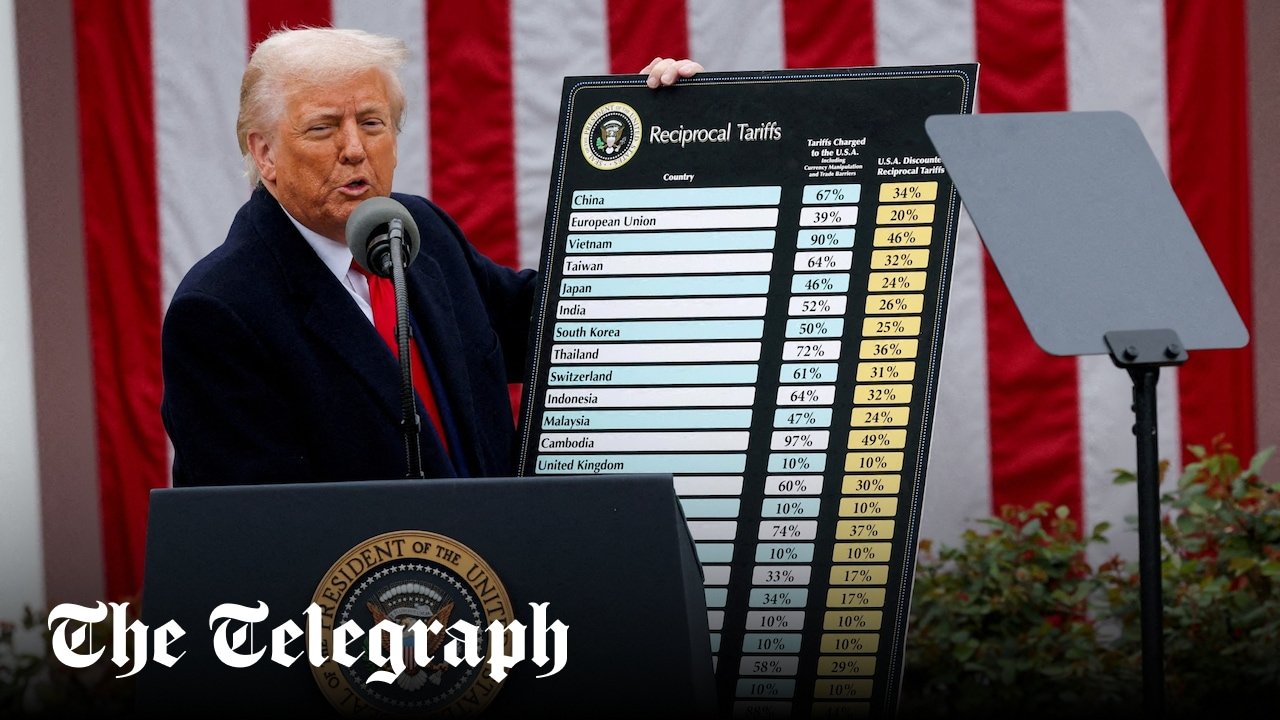Senator’s ‘aggressive’ plan could impose 500pc tariffs on nations that buy energy from Moscow
Copy link
twitter
facebook
whatsapp
email
Copy link
twitter
facebook
whatsapp
email
Copy link
twitter
facebook
whatsapp
email
Copy link
twitter
facebook
whatsapp
email
When Donald Trump’s Ukraine point man formulated a strategy to end the war, he envisaged a series of sanctions against Moscow if Vladimir Putin refused to enter into a ceasefire.
And now, after months of failed wrangling between the White House and the Kremlin, the restrictions could finally be on the table.
The US president is preparing to announce an “aggressive” plan in support of Ukraine. It could include economic penalties for Putin that were too strong even for Joe Biden to put in place.
The sanctions are laid out in the Sanctioning Russia Act of 2025, a bill drawn up by Lindsay Graham, an influential US senator, that has widespread support in Congress.
The measure would impose a 500 per cent tariff on goods from nations that buy Russian energy.
China, India, Turkey and Brazil would be forced to find alternative sources to retain access to the US market. The extension of sanctions on Russia’s central bank could further complicate trade.
In effect, the move would mimic the “maximum-pressure” sanctions imposed on Iran’s oil industry – and torpedo Moscow’s prime revenue source.
Mr Graham told CBS on Sunday that 88 senators have signed up for the sanctions package that would hand Mr Trump “a sledgehammer … to go after Putin’s economy and all those countries who prop up the Putin war machine”.
Mr Graham, a Republican, was recently in Rome with Richard Blumenthal, a Democrat senator, for talks with Mr Zelensky.
Mr Trump has yet to publicly endorse the sanctions bill, and has only stated his administration is “looking at it”.
Asked whether he would announce sanctions late on Sunday night, he said: “We will see you tomorrow.”
Technically, the US president does not have to endorse the legislation, and could even move to sanction Moscow without it.
Either way, it would be a step further than Joe Biden ever went. The former president, a much stronger backer of Kyiv, was unwilling to crack down against Russian energy exports, fearful of the impact on pump prices and his chance of re-election.
In 2022, the US oversaw the creation of a price cap on purchases of Russian oil, set at $60 (£44) a barrel.
The price cap was meant to trim down Moscow’s export earnings, rising and falling in line with the benchmark crude price, which slumped from $124 to $66 over the course of Mr Biden’s term.
However, it mostly prompted Russia to create a so-called “shadow fleet” of tankers to carry its oil to India, China and other nations, obscuring the origin of the fuel via foreign-flagged vessels.
Russia’s war effort is funded by fossil fuel exports. Since the war began, Moscow has earned £760 billion from oil, gas and coal sales, according to the Centre for Energy and Clean Air (Crea), a Helsinki-based think tank.
That is more than double the £300 billion given and promised to Ukraine so far across Europe and the United States. It is seven times what Russia spent on its military last year.
Western efforts to cut off this source of funding have had an impact at the fringes, though Russia has adapted with comparative ease.
Moscow has forgone £106 billion in oil revenue thanks to existing sanctions, according to data up to January 2025 from the KSE Institute, a branch of the Kyiv School of Economics.
Supporters of the new sanctions hope they will be the stick of the carrot-and-stick plan initially devised by Lt Gen Keith Kellogg, Mr Trump’s Ukraine envoy, to finally force Putin to the negotiating table.
Measures that would have rewarded Russia for reaching a ceasefire, such as denying Ukraine membership of Nato and ceding 20 per cent of its territory to Russia, were deployed to no avail by US negotiators.
Denying Ukraine membership of Nato and ceding 20 per cent of its territory to Russia, which were supposed to serve as carrots for Russia, were deployed to no avail by US negotiators.
Recommended
Mr Trump will be meeting Mark Rutte, Nato’s secretary-general, in the White House on Monday, while Lt Gen Kellogg is in Kyiv meeting with Volodymyr Zelensky, Ukraine’s president.
Defence, strengthening security, weapons, sanctions, protecting our people, strengthening co-operation between Ukraine and the United States – there are many topics to discuss,” Andriy Yermak, Mr Zelensky’s chief of staff, said ahead of the visit on Monday.
Mr Zelensky used his address to the nation on Sunday to say he wants to hear more about Washington’s plan to “compel Russia to make peace”.
Copy link
twitter
facebook
whatsapp
email
The Russian ‘sledgehammer’ sanctions that were too strong for Biden – The Telegraph



